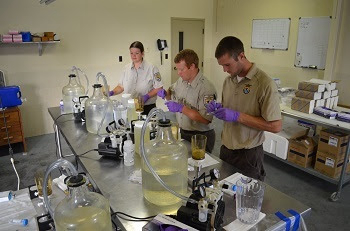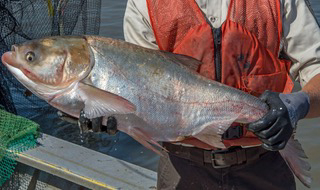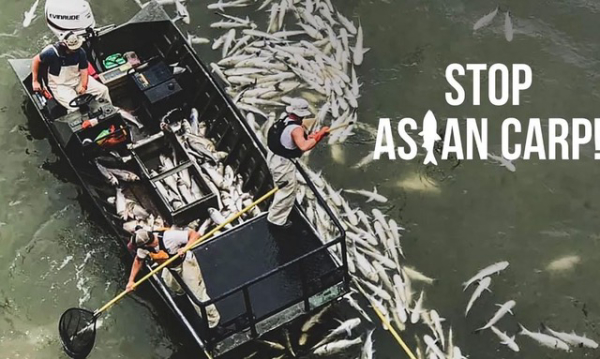Silver Carp eDNA Detected in One Location on St. Joseph River in Michigan

Routine environmental DNA (eDNA) surveillance for invasive bighead and silver carp, conducted annually by the U.S. Fish and Wildlife Service, turned up a single positive sample in the St. Joseph River near the St. Joseph/Benton Harbor area, according to data provided to the Michigan Department of Natural Resources on Aug. 28.
Of 220 water samples collected in June 2023 from stretches of the river between Lake Michigan and Berrien Springs, only one, taken near Marina Island, showed evidence of genetic material from silver carp.
“A positive eDNA sample does not necessarily indicate the presence of live fish,” said Seth Herbst, DNR Fisheries Research Program manager. “It is possible for genetic material to be introduced from other sources, such as boats or fishing equipment used in another state where invasive carp are present, then transported and used in Michigan waters.”
The Marina Island area is home to multiple marinas and a city boat launch with high recreational use by locals and visitors accessing the St. Joseph River and Lake Michigan. The positive detection occurred directly in front of a marina, suggesting boater traffic may have contributed to the detection.
“We use eDNA results as one piece of information to determine the best response to the potential threat of an invasive species,” said Herbst. “In this case, we have requested assistance from the U.S. Fish and Wildlife Service to conduct another round of eDNA sampling in the St. Joseph River beginning Sept. 5, with results to be processed as soon as possible.”
Since 2022, the USFWS has been conducting monthly electrofishing and netting in the St. Joseph River each summer to capture and remove grass carp. No silver carp have been observed or captured in these efforts, which will continue through October.
If new detections occur through either monitoring effort, the DNR will evaluate the evidence and determine if additional response actions are warranted.
10 years of monitoring
Since 2013, the USFWS has collected thousands of eDNA samples in the Great Lakes and its tributaries. Results from eDNA sampling, available at FWS.gov, do not suggest the presence of established populations of bighead or silver carp in the Great Lakes.
To date, there is no evidence of any live bighead, silver or black carp in the Great Lakes or Michigan rivers such as the St. Joseph River. Similarly, no bighead, silver or black carp have been caught in any of the thousands of fish population assessments conducted in Michigan’s inland lakes during that same time frame.
Michigan’s prevention efforts
“Along with our participation in the eDNA surveillance program, we continue to be diligent with early detection efforts, such as conducting fish population surveys, increasing awareness among anglers, and maintaining an invasive carp reporting website for anglers to share any suspicious catches or observations that occur during their outings,” said Herbst.
Michigan’s management plan for invasive carp outlines the actions to be taken if invasive carp are found in Michigan’s waters.
The state of Michigan is part of the Invasive Carp Regional Coordinating Committee, which develops and implements the annual Invasive Carp Action Plan, supporting sampling and removal efforts and testing technologies to deter invasive carp movement.
Michigan is committed to preventing the entry of bighead, silver or black carp into the Great Lakes.
- In 2018, with an $8 million commitment, Michigan joined Illinois to support U.S. Army Corps of Engineers’ effort to plan, engineer and design a series of invasive carp deterrents at a pinch point in the Illinois waterway, the Brandon Road Lock.
- The Brandon Road Interbasin Project is a series of deterrents, including an electric barrier, lock flushing abilities, and sound deterrents to prevent fish from entering the lock, the only pathway upstream at this location.
- This year, Michigan committed $64 million to support Illinois as the nonfederal sponsor to construct the designed project.
For more information about invasive carp and the threats they pose to Michigan’s waters, visit Michigan.gov/InvasiveCarp or InvasiveCarp.us.
You can help
Boaters and anglers are reminded to clean, drain and dry boats and gear and properly dispose of bait in accordance with state laws – measures that help limit the spread of invasive species.
All anglers are encouraged to learn how to identify invasive bighead and silver carp and report any suspect fish. Identification and reporting information can be found at Michigan.gov/InvasiveCarp.







